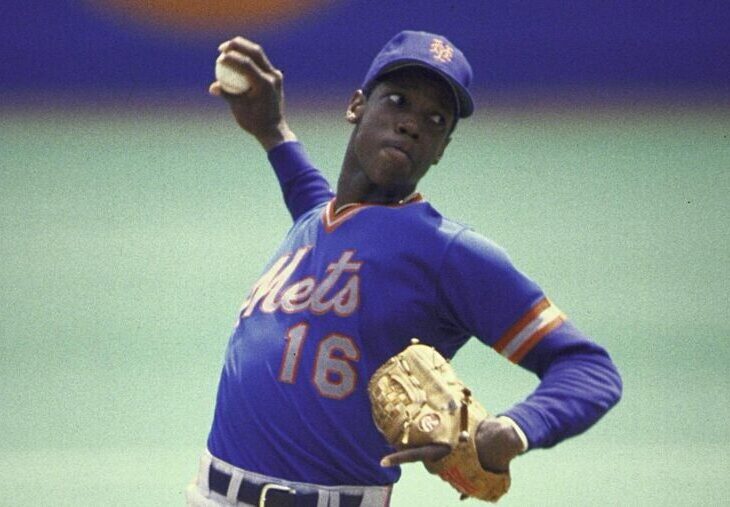
He established a rookie record for strikeouts, posted an ERA of 2.60, went 17-9 and completely captivated New York. It’s hard to believe Dwight Gooden almost didn’t start the ’84 season in the major leagues.
Davey Johnson, the Mets’ first-year manager who saw Gooden up-close when the teenager helped his Triple-A Tidewater club, insisted upon it.
Johnson eased the 19-year-old Gooden into the spotlight by having his initial entrance occur in a rather tempered environment. Met fans were anxious to see the teenage pitcher make his first start, but nobody was more anxious than Gooden himself. He arrived so early to the Astrodome that he needed to jump a fence so he could enter the stadium.
With his parents in attendance, Gooden didn’t show many nerves — at least outwardly. The final line was five innings, one run, three hits, two walks, five K’s, and win No. 1.
Doc found little trouble early, getting a pair of first-inning grounders to second and a patented K on Dickie Thon.
The Mets offense offered up some run support in the second, courtesy of the franchise’s other phenom — Darryl Strawberry. Still less than a year into his major league career, Straw took a Bob Knepper pitch to the deepest part of the cavernous ballpark. The Astrodome was renowned for holding power hitters in check, but Darryl made homering look rather easy.
Gooden encountered his biggest trouble in the fifth. A one-out single is followed with a two-out walk and base hit, which plates the first (and only) Houston run. Doc prevented further damage, ending his debut on a deep fly ball by Terry Puhl to Mookie Wilson in center field.
After relievers Dick Tidrow and Doug Sisk worked one inning each, Jesse Orosco finished the game with two innings to preserve Gooden’s 3-2 victory.
As is customary with a first-year player, Doc was inconsistent over his first two months. But from June 1 on, he looked like anything but a rookie. Before long, he was an All-Star and striking out veterans with regularity.
Gooden went 13-6 with a 2.37 ERA and 203 strikeouts in 166 2/3 innings for the duration of a phenomenal season. The end results for 1984 were remarkable. Gooden’s 276 strikeouts (11.4 every nine innings) remains the standard for first-year pitchers. Of the 879 batters he faced, 31.4 percent ended with a strikeout. When the Rookie of the Year voting was conducted, it was unanimous.
There is a direct correlation between the Tom Seaver trade in June 1977 and the moment when Shea went dark for all intents and purposes. While Keith Hernandez and Darryl Strawberry ensured the return of attitude and power with their arrival in 1983, it was Gooden — at 19 years old — who brought the electricity back in ’84.















